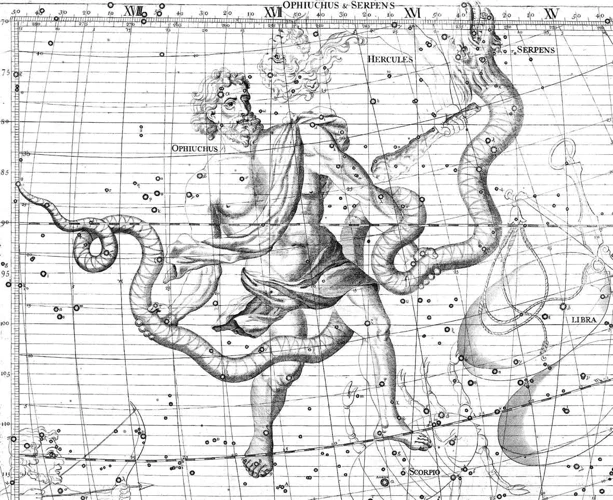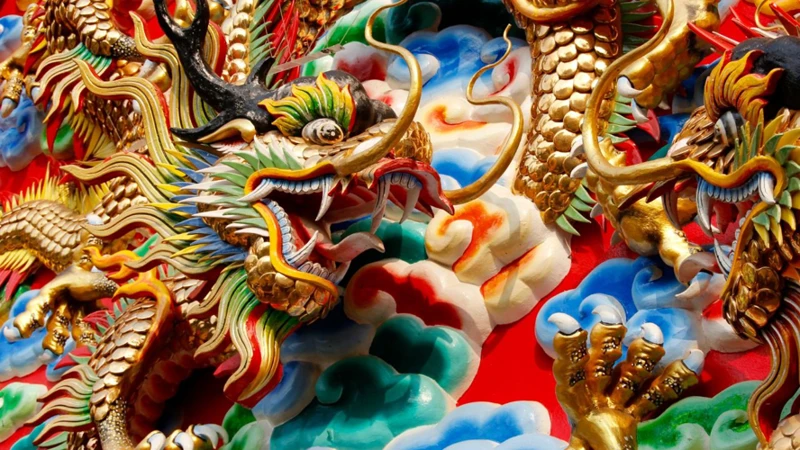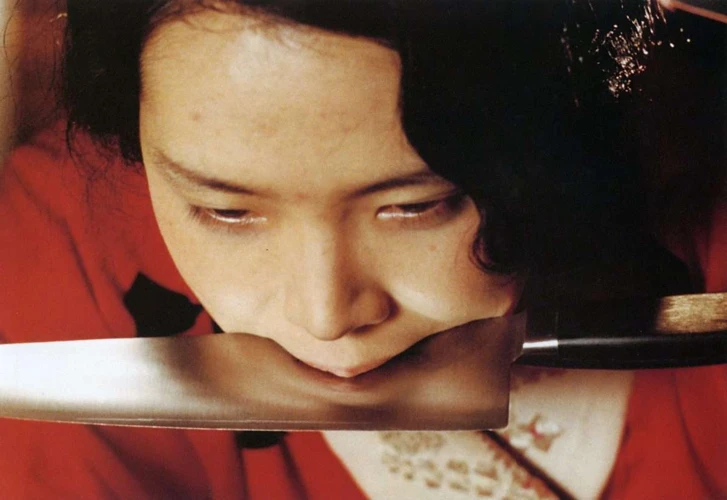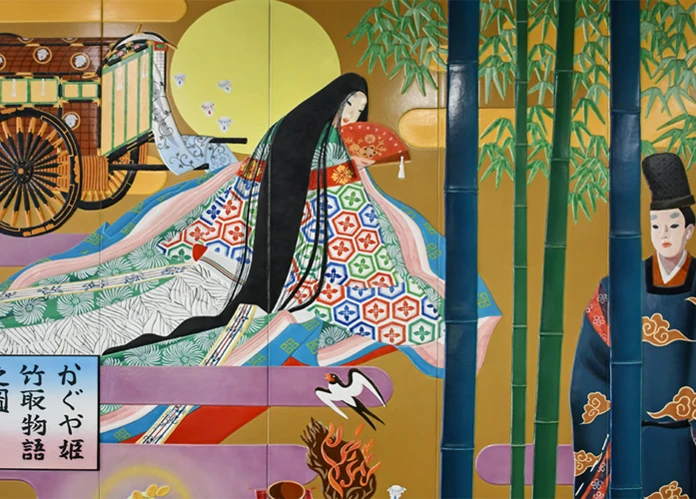Welcome to the fascinating world of Japanese mythology and folklore, where ancient legends and folktales weave together to create a rich tapestry of captivating stories and vibrant characters. From creation myths to tales of heroes, tricksters, and supernatural creatures, the folklore of Japan is filled with wonder and intrigue. Step into a realm where gods and goddesses shape the world, yokai roam the land, and love and tragedy unfold in beautiful and poignant ways. Join us on a journey through the famous legends and folktales from Japanese mythology, as we explore the timeless stories that have been passed down through generations.
Contents
- Creation Myths
- Yokai and Supernatural Creatures
- Heroes and Warriors
- Tricksters and Shapeshifters
- Love and Tragedy
- Conclusion
-
Frequently Asked Questions
- Who are Izanagi and Izanami?
- What is the significance of the Myth of Izanagi and Izanami?
- Who is Amaterasu?
- What is the role of Susanoo in Japanese mythology?
- Who is Tamamo-no-Mae?
- What is a Kappa in Japanese folklore?
- Who is Momotaro?
- What is the story of Urashima Taro?
- What are Kitsune in Japanese folklore?
- Who is Princess Kaguya?
- References
-
Frequently Asked Questions
- 1. Who were Izanagi and Izanami?
- 2. What is the significance of Amaterasu and Susanoo?
- 3. What are Yokai and Supernatural Creatures?
- 4. Who was Tamamo-no-Mae?
- 5. What is the myth of the Kappa?
- 6. Who was Momotaro?
- 7. What is the tale of Urashima Taro?
- 8. What is the legend of the Kitsune?
- 9. What is the tale of the Tanuki?
- 10. Who were Orihime and Hikoboshi?
- References
- Read More
Creation Myths

In the realm of Japanese mythology, the creation myths form the foundation of the rich tapestry of folklore and legends. One prominent creation myth is The Myth of Izanagi and Izanami, which tells the story of the divine siblings who were tasked with creating the world. According to the legend, they stood on the “floating bridge of heaven” and stirred the primordial sea with a jeweled spear. As they lifted the spear out of the water, the drops that fell from it formed the islands of Japan. Another famous creation myth is The Legend of Amaterasu and Susanoo, which centers around the sun goddess Amaterasu and her mischievous brother Susanoo. When Susanoo wreaked havoc in the heavenly realms, causing darkness and chaos, Amaterasu retreated into a cave, plunging the world into darkness. To entice her out, the gods performed a lively dance, and Amaterasu emerged, restoring light and order to the world.
The Myth of Izanagi and Izanami
The Myth of Izanagi and Izanami is a captivating tale from Japanese mythology that revolves around the creation of the world. According to the legend, Izanagi, the male deity representing the sky, and Izanami, the female deity representing the earth, descended from the heavens onto the floating bridge of heaven. They were given a jeweled spear, and together, they stirred the chaotic sea below. As they lifted the spear out of the water, the drops that fell from it formed the islands of Japan.
Excited by their creation, Izanagi and Izanami decided to live on the island they had formed and build a divine dwelling. They circled the heavenly pillar, Izanagi emerging from the left while Izanami emerged from the right. It was during their encounter at the heavenly pillar that they became husband and wife. However, tragedy struck when Izanami gave birth to a malformed child, Kagutsuchi, the fire god, who tragically burned his mother to death during birth.
Devastated by Izanami’s death, Izanagi traveled to the land of Yomi, the underworld, in search of his beloved. However, he was unable to rescue her, and in his quest to bring her back, he broke a promise and looked upon her decaying form. Horrified, Izanagi fled the underworld, sealing its entrance behind him with a rock, thus giving birth to death and separation.
This ancient myth of Izanagi and Izanami speaks to the cycle of life, creation, and death in Japanese mythology. It serves as a reminder of the delicate balance between the divine and mortal realms, and the consequences that arise from breaking sacred promises.
The Legend of Amaterasu and Susanoo
The Legend of Amaterasu and Susanoo is a captivating tale from Japanese mythology that centers around the sun goddess Amaterasu and her mischievous brother Susanoo. The legend begins when Susanoo’s unruly behavior in the heavenly realms triggers a series of calamities, inflicting darkness and chaos upon the world. Fed up with Susanoo’s actions, Amaterasu retreats into a cave, plunging the world into darkness.
Desperate to bring back light and order, the gods devise a plan to coax Amaterasu out of the cave. They gather outside the entrance and begin a lively celebration, filling the air with laughter, music, and dance. As the sounds reach Amaterasu’s ears, her curiosity is piqued. Curious about the commotion, she cautiously peeks out of the cave to see what is happening.
Upon seeing the radiant goddess emerge, the gods quickly close the cave’s entrance, preventing Amaterasu from retreating again. They present her with a sacred mirror, which reflects her divine beauty and symbolizes her role as the goddess of the sun. Amaterasu is so captivated by her reflection that she forgets her anger and the world once again basks in the warm rays of her light.
The Legend of Amaterasu and Susanoo is a powerful metaphor for the cyclical nature of life and the importance of harmony and balance. It highlights the contrasting yet complementary forces of light and darkness, and the role of family dynamics in shaping the world. Through this legend, the sun goddess Amaterasu becomes a symbol of hope, enlightenment, and the power of forgiveness.
Yokai and Supernatural Creatures

In Japanese mythology, the world is inhabited by a vast array of fascinating yokai and supernatural creatures. One well-known tale is The Tale of Tamamo-no-Mae, a fox spirit who takes the form of a beautiful woman and bewitches the emperor and his court with her enchanting charms. Another popular legend involves The Legend of Kappa, mischievous water spirits that inhabit rivers and ponds. These creatures are often depicted as small, green-skinned humanoid beings with a distinctive bowl-shaped indentation on their heads. They are known for their mischievous pranks and their love for cucumbers. The folklore of Japan is filled with countless other yokai and supernatural beings, each with their own unique stories and characteristics, making the world of Japanese mythology an endless source of wonder and intrigue.
The Tale of Tamamo-no-Mae
In the world of Japanese mythology, is a captivating and tragic story that has captured the hearts of many. Tamamo-no-Mae, also known as Lady Tamamo, was believed to be a beautiful and intelligent woman who possessed extraordinary magical powers. She was said to be a nine-tailed fox yokai in disguise, capable of transforming into a seductive human form. With her enchanting beauty and charm, Tamamo-no-Mae managed to become a favorite of Emperor Toba, earning his trust and admiration. However, her true nature eventually came to light when her magical aura caused illness and misfortune within the palace. Suspecting foul play, the emperor sought the help of the legendary warrior hero, Yoshitsune, to investigate Tamamo-no-Mae’s true identity. Through their efforts, they discovered the truth and engaged in a fierce battle against the powerful yokai. In the end, Tamamo-no-Mae was defeated and her true form was revealed, bringing an end to her reign of deception. The tale of Tamamo-no-Mae serves as a cautionary reminder of the dangers of deceit and the consequences that may arise from hidden intentions. The story also highlights the belief in the existence of supernatural creatures such as yokai in Japanese mythology, adding a sense of mystery and wonder. To this day, Tamamo-no-Mae remains a prominent figure in Japanese folklore, captivating audiences with her complex character and tragic fate.
The Legend of Kappa
Deep within the rivers and lakes of Japan, a mystical creature called the Kappa is said to dwell. The legend of the Kappa is one that has been passed down through generations and continues to captivate the imaginations of people today. A Kappa is often depicted as a small humanoid creature, roughly the size of a child, with scaly skin and a beak-like mouth. It is known for its amphibious nature, being equally comfortable on land and in water. The most distinctive feature of the Kappa is the bowl-shaped indentation on the top of its head, which is filled with water. This bowl is the source of the Kappa’s power and must always be kept filled. According to the legend, the Kappa has a mischievous and sometimes malevolent nature. It is known to play pranks on humans, such as pulling them underwater or stealing crops from fields. However, the Kappa can also be appeased and even helpful if treated with respect. One way to appease a Kappa is by bowing deeply, as the creature is compelled to return the gesture. Some stories even tell of Kappas having a sense of honor, with certain individuals forming bonds with humans and offering protection. The legend of the Kappa serves as a reminder of the delicate balance between humans and the spirits of nature, and the importance of showing reverence to the unseen world around us.
Heroes and Warriors

In the vibrant realm of Japanese mythology, the tales of heroes and warriors stand out as legendary sagas of bravery and adventure. One such tale is The Legend of Momotaro, which follows the journey of a young boy born from a peach. Momotaro, meaning “Peach Boy,” embarks on a quest to rid his village of evil oni (demons). Armed with his loyal animal companions – a dog, a monkey, and a pheasant – Momotaro faces numerous trials and ultimately triumphs over the oni, bringing peace back to his people. Another renowned story is The Tale of Urashima Taro, an enchanting account of a fisherman who saves a turtle and is rewarded with a visit to the undersea kingdom of the Dragon God. However, upon returning to the surface, Urashima Taro discovers that centuries have passed, and everything he once knew has changed. These tales of heroism and resilience inspire generations with their narratives of valor and the indomitable spirit of the human heart.
The Legend of Momotaro
The Legend of Momotaro is a beloved Japanese folktale that tells the story of a courageous hero born from a peach. According to the legend, an elderly couple discovered a giant peach floating downstream. When they cut it open, they found a baby boy inside, whom they named Momotaro, meaning “Peach Boy”. As Momotaro grew up, he exhibited extraordinary strength and bravery. One day, he declared his intention to defeat a band of marauding demons that terrorized the nearby villages. To aid him in his mission, Momotaro enlisted the help of various talking animal companions, including a dog, a monkey, and a pheasant. Together, they embarked on a perilous journey to the demons’ stronghold on an island. Along the way, Momotaro demonstrated his cunning and fighting skills, ultimately defeating the demons and returning home as a hero. The Legend of Momotaro showcases the virtues of bravery, teamwork, and triumph in the face of adversity, making it a timeless and cherished folktale in Japanese culture.
The Tale of Urashima Taro
is a beloved Japanese folktale that tells the story of a young fisherman who discovers a magical underwater kingdom. In the tale, Urashima Taro saves a turtle from being tormented by a group of children. Grateful for his kindness, the turtle reveals itself to be a princess from the Dragon Palace beneath the sea. As a reward, she invites Urashima Taro to visit her kingdom. Guided by the turtle princess, he travels to the underwater realm and is greeted with awe-inspiring sights and luxurious hospitality.
However, Urashima Taro eventually becomes homesick and asks to return to his village. The princess grants his request but warns him never to open a small box that she gives him, as it contains their ageless memories. Eager to see his family and friends again, Urashima Taro returns to his village only to discover that centuries have passed in the human world.
Devastated and lonely, Urashima Taro opens the box, releasing a white cloud and instantly aging into an old man. The tale serves as a cautionary reminder of the fleeting nature of time and the consequences of breaking a promise. The tale of Urashima Taro has captivated generations with its poignant message and serves as a reminder to cherish the present.
Tricksters and Shapeshifters

Within the realm of Japanese mythology, tricksters and shapeshifters hold a prominent place in the tales and folklore. One well-known trickster is the mythical creature known as the Kitsune. In Japanese folklore, the Kitsune is a fox spirit known for its intelligence, cunning, and ability to shape-shift. It is said that the Kitsune possesses multiple tails, gaining more with age and wisdom. These mischievous creatures often take on human form, manipulating events and deceiving unsuspecting individuals. Their legendary powers include illusion-casting, possession, and even the ability to control fire. Similarly, another shapeshifter popular in Japanese mythology is the Tanuki, a raccoon dog known for its mischievous nature and shape-shifting abilities. Often depicted as friendly and jovial, the Tanuki can morph into various forms, such as a human or an inanimate object. In folklore, they are known for using their transformative abilities to play pranks on humans and engage in whimsical antics.
The Legend of the Kitsune
Deep within the folklore of Japanese mythology, one finds an enchanting legend known as . Kitsune, meaning “fox” in Japanese, are mystical creatures capable of shape-shifting and possessing great intelligence. According to the legend, kitsune are associated with Inari, the Shinto god of rice and agriculture. In some variations, they are depicted as messengers and guardians of Inari’s shrines, while in others, they are seen as mischievous tricksters. Kitsune are believed to have the power to transform into humans, other animals, or even inanimate objects.
In these captivating stories, kitsune often interact with humans, displaying a range of personalities from benevolent and playful to cunning and deceitful. They’re known for their love of sake and their ability to bewitch others with their magical foxfire or illusions. In some tales, they offer wisdom and assistance to those they deem worthy, while in others, they test the character and integrity of individuals through their cunning tricks and illusions.
One famous tale surrounding the kitsune is that of Tamamo-no-Mae, a beautiful and intelligent woman believed to be a kitsune in disguise. She was known for her incredible knowledge and wisdom, which captivated the emperor of Japan. However, as her true nature was revealed, Tamamo-no-Mae turned out to be a malevolent fox spirit that had to be defeated to protect the emperor’s reign.
The Legend of the Kitsune serves as an emblem of the mysticism and duality found in Japanese mythology. It is a testament to the allure of these magical creatures and their ability to both enchant and deceive those who encounter them.
The Tale of the Tanuki
- The Tale of the Tanuki: The Tanuki, also known as the raccoon dog, is a prominent figure in Japanese folklore. In Japanese mythology, the Tanuki is depicted as a mischievous and shapeshifting creature with a plump belly and a jovial nature. The Tanuki is often portrayed as a trickster, using their shape-shifting abilities to play pranks on unsuspecting humans. One famous folktale involving the Tanuki is “The Tale of the Tanuki and the Teapot.” In this story, a Tanuki disguises itself as a teapot and enters the home of an unsuspecting human. The Tanuki then proceeds to cause all sorts of chaos and mischief within the household. The story serves as a cautionary tale about the dangers of allowing strangers into one’s home and emphasizes the importance of being wary of appearances. Experiences with the Tanuki are said to range from delightful to terrifying, depending on the animal’s mood and intentions.
Love and Tragedy

Love and tragedy are recurring themes in the captivating stories of Japanese mythology. One poignant tale is The Story of Orihime and Hikoboshi, also known as the Tanabata legend. It tells the story of Orihime, the weaver princess, and Hikoboshi, the cowherd. They fall deeply in love and get married, but their happiness is short-lived when they are separated by the Milky Way as punishment for neglecting their duties. Only allowed to meet once a year on the seventh day of the seventh month, their reunion is marked by tears and longing. Another famous tale is The Legend of Princess Kaguya, a tragic story of a moon princess who is found as a baby inside a shining bamboo stalk. As she grows up, suitors from far and wide seek her hand in marriage, but she rejects them all. In the end, she reveals her true identity and returns to the moon, leaving behind her heartbroken suitor. These tales of love and tragedy remind us of the fleeting nature of happiness and the enduring power of longing and lost love.
The Story of Orihime and Hikoboshi
The Story of Orihime and Hikoboshi, also known as the Tanabata or Star Festival, is an enchanting love story that originates from Japanese mythology. Orihime, the weaver princess, and Hikoboshi, the cowherd, were two celestial beings who fell deeply in love. Their love was so strong that they neglected their duties – Orihime’s weaving and Hikoboshi’s herding – which led to the displeasure of the gods. As a consequence, they were separated by the heavenly river, known as the Milky Way. Overwhelmed by sadness, Orihime pleaded with her father, the king of the heavens, to let her be reunited with her beloved Hikoboshi. Touched by her devotion, the king allowed them to meet once a year on the seventh day of the seventh month. Legend has it that on this day, magpies form a bridge across the Milky Way, allowing Orihime and Hikoboshi to be together. This poignant tale of love and longing has been celebrated for centuries during the Tanabata festival, where people write their wishes on colorful strips of paper and hang them on bamboo trees.
The Legend of Princess Kaguya
is a beloved Japanese folktale that tells the story of a mysterious girl who is discovered inside a glowing bamboo stalk. Found by a bamboo cutter, she is raised as his own daughter along with his wife in a humble countryside home. As the girl, named Kaguya, grows up, her beauty captivates everyone around her, and news of her spreads far and wide. Suitors from noble families come to woo her, but Kaguya refuses their advances, insisting that she is not of this world and must return to her true home.
As the story unfolds, it is revealed that Kaguya is not an ordinary girl, but rather a celestial being sent by the Moon to experience life on Earth. Despite her attachment to her adoptive family and friends, Kaguya’s destiny remains tied to the Moon, and she must eventually return. In a heart-wrenching farewell, Kaguya leaves behind a letter expressing her love and gratitude, but also her sadness at having to part ways.
The Legend of Princess Kaguya is often interpreted as a tale of transient beauty and the impermanence of life. It explores themes of love, sacrifice, and the longing for a sense of belonging. This poignant folktale has inspired numerous adaptations in literature, theatre, and film, showcasing the enduring power of its narrative.
Conclusion

In conclusion, the famous legends and folktales from Japanese mythology provide a captivating glimpse into the cultural heritage of Japan. These stories not only entertain and inspire, but they also reflect the values and beliefs of the Japanese people. Whether it’s the creation myths that explain the origins of the world and the divine beings who shaped it, the tales of heroes and warriors who demonstrate bravery and honor, or the stories of tricksters and shapeshifters who challenge conventions, each legend and folktale offers a unique perspective on life and the human experience. Moreover, the folklore of Japan is intertwined with awe-inspiring supernatural creatures such as yokai, adding an element of mystery and enchantment. By delving into these myths, we gain a deeper appreciation for the cultural richness and artistic expression of Japan. Comparing Japanese mythology to mythology from other cultures allows us to recognize common themes and universal truths that transcend boundaries. So, immerse yourself in the captivating world of Japanese mythology and let these timeless tales continue to inspire your imagination.
Frequently Asked Questions

Who are Izanagi and Izanami?
Izanagi and Izanami are divine siblings and central figures in Japanese mythology. They are credited with the creation of the world and played a crucial role in shaping the Japanese land and people.
What is the significance of the Myth of Izanagi and Izanami?
The Myth of Izanagi and Izanami offers insights into the origin of Japan itself. It explains how the islands were formed and how the divine siblings established the foundation of Japanese society and culture.
Who is Amaterasu?
Amaterasu is the goddess of the sun in Japanese mythology. She is revered as one of the most important and powerful deities and is considered the ancestor of the Japanese imperial family.
What is the role of Susanoo in Japanese mythology?
Susanoo is the brother of Amaterasu and a prominent figure in Japanese mythology. Known as the god of storms and the sea, Susanoo often displayed mischievous and destructive behavior, but also played a vital role in protecting and shaping the world.
Who is Tamamo-no-Mae?
Tamamo-no-Mae is a legendary fox spirit or yokai in Japanese mythology. She is often depicted as a beautiful and seductive woman who uses her powers to manipulate and deceive humans.
What is a Kappa in Japanese folklore?
A Kappa is a water-dwelling creature from Japanese folklore. It is said to have a reptile-like appearance, with a greenish-blue scaly body, a beak-like mouth, and a depression on its head filled with water.
Who is Momotaro?
Momotaro, meaning “Peach Boy,” is a heroic figure in Japanese folklore. He is said to have been born from a peach and embarked on a journey to defeat evil oni (demons) with the help of animal companions.
What is the story of Urashima Taro?
The tale of Urashima Taro is a popular folktale in Japanese culture. It follows the story of a fisherman who saves a turtle from being tormented by children. As a reward, the turtle takes him to the underwater Dragon Palace, where he spends what feels like a few days but turns out to be several years. When he returns to the surface, he discovers that several centuries have passed.
What are Kitsune in Japanese folklore?
Kitsune are fox spirits that appear in Japanese folklore. They are often portrayed as intelligent, shape-shifting creatures with magical abilities. They are associated with both mischief and benevolence, and their number of tails is said to represent their age and power.
Who is Princess Kaguya?
Princess Kaguya, also known as Kaguya-hime, is a central character in the famous Japanese folktale “The Tale of the Bamboo Cutter.” She is a supernatural being who is found as a baby inside a bamboo stalk and ultimately returns to her celestial origins, leaving behind a devastated mortal world.
References
Frequently Asked Questions

1. Who were Izanagi and Izanami?
Izanagi and Izanami were the deities responsible for the creation of Japan in Japanese mythology. According to the myth, they were tasked with forming the islands and giving birth to numerous other gods and goddesses.
2. What is the significance of Amaterasu and Susanoo?
Amaterasu and Susanoo are prominent gods in Japanese mythology. Amaterasu is the goddess of the sun and is considered the ancestor of the Japanese imperial family. Susanoo, on the other hand, is the storm god known for his mischievous behavior.
3. What are Yokai and Supernatural Creatures?
Yokai are supernatural creatures in Japanese folklore. They can take different forms and often possess magical or supernatural abilities. They range from mischievous spirits to malevolent monsters.
4. Who was Tamamo-no-Mae?
Tamamo-no-Mae is a legendary fox spirit often depicted as a beautiful woman. According to the tale, she possessed immense magical powers and used her charm to manipulate powerful men for her own gain.
5. What is the myth of the Kappa?
The Kappa is a legendary creature often described as a water-dwelling humanoid with a shell on its back and a water-filled cavity on its head. It is known for its mischievous nature and its penchant for pulling pranks on humans.
6. Who was Momotaro?
Momotaro is a beloved hero in Japanese folklore. He is known as the Peach Boy and is said to have been born from a giant peach. Momotaro embarks on a journey to defeat a band of ogres and bring peace to his village.
7. What is the tale of Urashima Taro?
The tale of Urashima Taro is a famous legend that tells the story of a fisherman who saves a turtle and is rewarded with a visit to an undersea palace. However, when he returns to his village, he discovers that centuries have passed.
8. What is the legend of the Kitsune?
The legend of the Kitsune revolves around magical foxes with shape-shifting abilities. They are often depicted as intelligent and mischievous creatures capable of both good and evil deeds.
9. What is the tale of the Tanuki?
The tale of the Tanuki features a raccoon dog known for its mischievous and shapeshifting nature. Tanuki are often portrayed as playful tricksters who use their shape-shifting abilities to fool and confuse humans.
10. Who were Orihime and Hikoboshi?
Orihime and Hikoboshi were celestial lovers in ancient Japanese mythology. They were separated by the Milky Way and were allowed to meet only once a year during the annual Tanabata festival.







